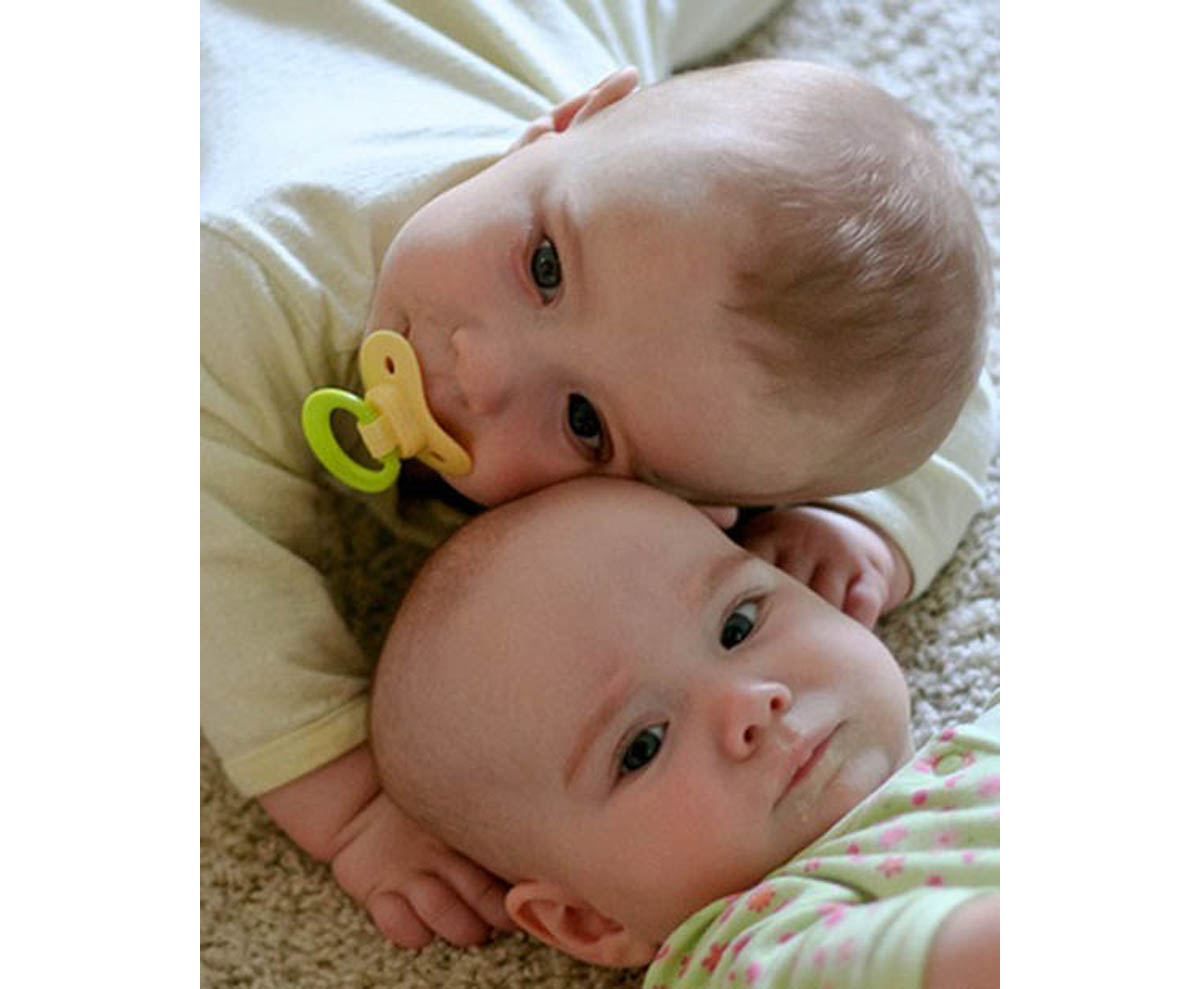Spanish researchers have found that when twin pregnancies are created by In Vitro Fertilization (IVF), the stronger embryo actually helps the weaker one survive. There is a higher live birth weight from IVF when there are twin pregnancies, the surprising finding discovered.
The objective of this controversial study was to begin to find out just why the live birth rate per implanted embryo is higher in twin versus single pregnancies. The Spanish scientists published a report in the journal Obstetrics and Gynecology where they uncovered that there is an increased live birth rate in twin pregnancies from embryo assistance. The overall rate of survival to birth per embryo was around 80 percent in the twin pregnancies, as compared to a significantly lower 75 percent when women were carrying only one child.

Apparently, the feeble embryos that would fail on their own actually survive when they are supported by a stronger twin. This is the concept of “embryo assistance”, a term the researchers use to explain the higher live birth rates in the twin pregnancies. Only around one percent of U.S. births comes about with the help of IVF but this technique is responsible for about 15 percent of twin births, as multiple embryos are often implanted to increase the odds that at least one will survive. As it turns out, where one lives, very often two can make it.
The American Society for Reproductive Medicine suggests that only two embryos be implanted into a woman under the age of 35 and doctors should consider only using one. With this new research, they may change their minds. This new study was based on information collected from over 1, 150 single and over 500 twin pregnancies. None of these resulted in identical twins where the fertilized egg splits and develops into 2 embryos, so they were all fraternal embryos originating from the implantation of two embryos at the outset.
The doctors often implant more than one embryo to increase the chances of a successful pregnancy, particularly in the U.S. Clinics have been cutting back on the number of embryos used because of the risk that multiple pregnancies carry to the fetuses. Apparently, it was previously thought that when there is more than one embryo, the survival rate went down.
Now, thanks to this new medical information, doctors can justify implanting two rather than one embryo.
Lead by head researcher Dr. Fernando Miro of the Hospital Clinic in Barcelona, this important study concluded that the higher live birth rate occurring in the twin pregnancies is directly related to the assistance of a strong twin and the effect was more pronounced in older mothers.
The U.S. Center for Disease Control and Prevention’s National Center for Health Statistics released new data regarding the increase of twin births that has occurred in America over the last thirty years. In 2009, one in every thirty babies born was a twin. This was compared to one in every fifty in 1980. Also, twin birth rates rose by nearly one-hundred percent among women age 35 to 39 and more than two-hundred percent for women over 40.
- ASRM.org (2012). NCHS Issues Data Brief on Increase in Twin Births. Retrieved from: www.asrm.org/NCHS_Issues_Data_Brief_on_Increase_in_Twin_Births/
- Joelving, F. (2012). Do twin embryos help each other survive in IVF? Retrieved from: www.reuters.com/article/2012/01/02/us-twin-embryos-idUSTRE8010FC20120102
- Miro, F., Vidal, E. & Balasch, J (2012). Increased live birth rate in twin pregnancies resulting from embryo assistance. Retrieved from: journals.lww.com/greenjournal/Abstract/2012/01000/Increased_Live_Birth_Rate_in_Twin_Pregnancies.8.aspx
- Photo courtesy of evilpeacock on Flickr: www.flickr.com/photos/evilpeacock/3913600294/


Your thoughts on this